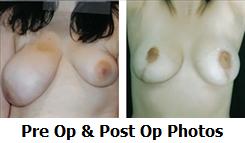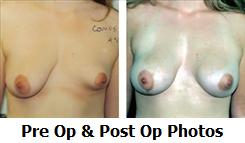BREAST ASYMMETRY METHODS FOR RECONSTRUCTION
Posted On: June 26, 2010 Author: The Office of Dr. Stuart Linder Posted In: Breast Asymmetry, Breast Implants, Breast Reconstruction, Breast Reduction, Plastic Surgery
Patients present to my office monthly for breast asymmetry repair. Patients are very unhappy with the appearance of their breasts, especially when one is significantly larger or a different shape and/or size then the other. In fact, breast asymmetry is a very commonly searched term on the internet. In general, breast asymmetry is associated with different size breasts, as well as shapes that may be different, such as tubular breast deformity, as well as sagginess or skin laxity of one or both breasts, which also leads to a symmetric appearance. As a result, the Board Certified Plastic Surgeon needs to appreciate both volume and skin laxity discrepancies on both breasts. Asymmetry in general with most women’s breasts is quite normal. However, when it becomes one-half to greater than one cup size in difference, patients can become very distraught. Younger patients often present for breast asymmetry reconstruction, often presenting with their parents, in order to repair the breasts and make them appear and feel normal. Most of the women do not want to have an exaggerated or enlarged appearance, rather they want to recreate a symmetric, even appearance with possibly a slight increase in volume.
Our first case is a breast asymmetry or the young 18-year-old female presents with severe right breast hypertrophy in which the left breast underdeveloped and the right one became enlarged. A reduction mammoplasty on the right with a small implant lift on the left allowed for good symmetric repair of the upper breast as well as elevating the nipple areolar complexes even bilaterally. She underwent, of course, the anchor scar which is evident. The scar is well worth the tradeoff of her now normal appearance and symmetric, even breasts.

The second example below shows a significant asymmetry in which the left breast shows a tubular-like deformity with pseudo-herniation of the breast tissue into the nipple areolar complex, poorly defined inframammary fold and loss of complete volume. The right breast on the second example shows grade 3 ptosis in which the nipple is well over 3 cm below the fold. As a result, this patient underwent an augmentation mammoplasty procedure bilaterally with invariably different size implants, as well as a mastopexy on the right breast using the inferior pedicle Wise-pattern technique or anchor scar. Her postoperative appearance shows symmetric, even breasts with the nipple also at the same position.

A final example shows significant breast asymmetry of volume only. This patient does not require any form of lift or reduction. Through a periareolar incision and a dual plane technique, high profile saline implants were placed behind the muscle, 520 cc on the right and 420 cc on the left. The 100 cc difference gained us approximately one cup size in volume on the right, evening out her breasts beautifully.

In conclusion, breast asymmetry is an extremely common problem that we see every day as breast specialists. Doctors performing reconstruction for asymmetric breasts should be Diplomates of the American Board of Plastic Surgery. In other words, Board Certified Plastic Surgeons, who have tremendous experience and excellent judgment on how to reconstruct breast deformities in women in general.